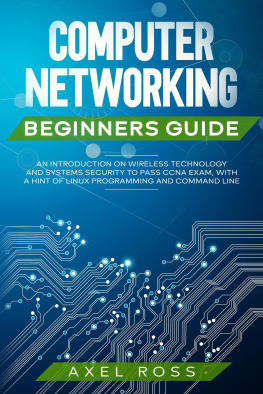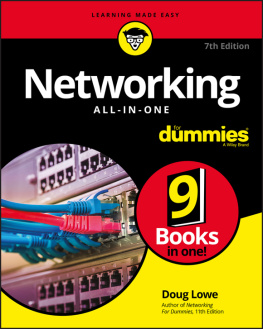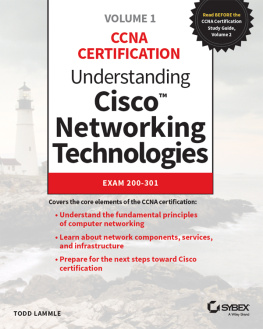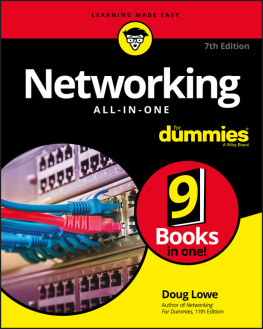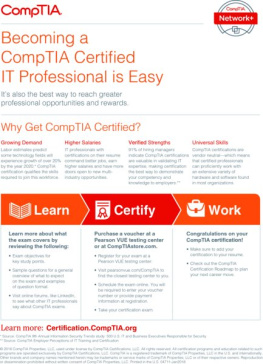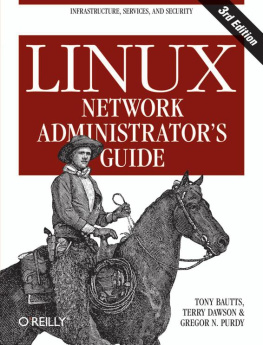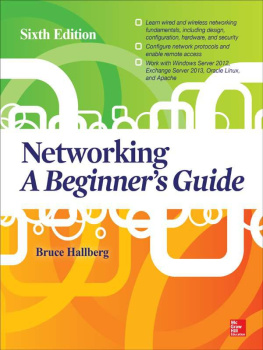Chapter 1. Computer Networking Overview
In this chapter
Defining the computer network
Reasons for networking personal computers
How PC networks got their start
Transferring data from the computer to the network
Understanding the role of the network administrator
It is certainly safe to say that computers have become as integral to modern life as fast food, cell phones, and sport utility vehicles. And although these trends may seem a little alarming, even scary (especially to anyone who has had a near miss with a massive SUV piloted by a driver who is preoccupied with his cell phone and a greasy box of French fries), the personal computer has evolved from a standalone device reserved for business applications into a device that can provide everything from real-time communications between users, to streaming audio and video, to the sharing of facts and figures across the length and breadth of our planet.
Computers are no longer just number-crunching business tools; they have become integral to communication, entertainment, and education. All the incredible possibilities offered by personal computers are in most part based on the simple notion that we can connect computers together into networks.
What Is a Network?
Before we plunge headlong into a discussion of how networks actually operate and what it takes to get them up and running (a discussion that will lead you through the other chapters of this book), we should probably first define what a network is and then discuss why you would want to connect computers into a network. A network can be anything from a simple collection of computers (two connected computers qualify as a network) at one location that have been tied together using a particular connectivity medium (such as network cabling or wireless technology) to a giant global network, such as the Internet, that uses a number of different connectivity media, including microwave and satellite technology. The network can then be used to transmit data, voice, and even video between users on the network.
Networks consist of the computers, the connectivity medium (such as copper wire or fiber optic cables), and other devices, such as hubs, switches, and routers (which are all discussed later in the book), that make up the network infrastructure. Some devices, such as network interface cards, serve as the computer's connection to the network. Devices such as switches and routers provide traffic-control strategies for the network. All sorts of different technologies can actually be employed to move data from one place to another, including network cabling (copper or fiber optics), radio waves, and even microwave technology.
Note
 | Networks are not networks just because they contain highly complex connectivity strategies. Two computers running the Windows Me operating system can be joined together by their COM ports (also known as serial ports ) by a single serial cable. Is this a network? Sure, it allows you to share resources between the two computers and therefore meets the basic definition of what a network is. In our discussion of computer networks, we will be looking at two distinct entities: LANs and WANs. A, "Expanding a LAN with WAN Technology"). |
Why Network Your Computers?
There are actually some very compelling reasons why someone (someone being a person, small business, or mega-institution) with more than a couple computers would want to connect those computers into a network. What the network will actually be used for will, of course, vary depending on the needs of the person or organization creating the network. Networks can be used for simple tasks, such as sharing a printer, or they can be used for more advanced applications, such as a complex point-of-sale system and worldwide video conferencing.
All networks, whether big or small, are typically created so that users on the network can share resources and communicate. The list that follows breaks down some of the reasons for networking computers:
File sharing. Networking computers makes it very easy for the users on the network to share data files. Files on a particular user's computer can be shared on the network or files can be placed on a file server, which provides a central location for all files needed by the users on the network.
Hardware sharing. Users can share devices such as printers, CD-ROM drives, and hard drives (users can be assigned space on network server drives). Once networked, computers can share their own local devices, such as CD-ROM and hard drives, or take advantage of high-speed printers or other devices that are provided by a particular server on the network.
Program sharing. Applications such as spreadsheets and word processors can be run over the network. You keep most of the files that make up the application on a special application server on the network. This makes installing the software on a computer easier (because it can be done over the network). It also makes upgrading an application easier because the upgrade only has to be performed on the server itself.
User communication. Networks allow users to take advantage of communication media such as electronic mail, newsgroups, and video conferencing. Because voice, pictures, and video can be moved across the network as data, network communication is certainly not limited to just text messages. A number of communication platforms exist for PC networks such as Lotus Notes and Microsoft Exchange.
Multiplayer gaming. While this certainly isn't a reason for networking computers in a business environment, individuals who set up home-based peer-to-peer networks can take advantage of a large number of computer games that provide support for multiple players on a network.
Not only does a network provide the ability to share resources found locally on the network (such as a printer shared by several users in a small office), but the fact that the network exists means that the local network can be connected to other networks. Most networks, big and small, are also now connected to the Internet, meaning that the potential for sharing resources and communication is almost endless. One of the most compelling reasons for a company to decide to network its computers is to have all its users "plugged in to" the global network that is the Internet.
Tip
 | In networks that consist of more than just a few computers, you will have two different types of computers operating on the network: clients and servers. Client computers supply users with a connection to the network. Servers actually serve up the resources that are available on the networkeverything from files to electronic mail post offices. A more detailed discussion of clients and servers is offered later in this chapter. |
PC Networking: How It All Began
Computing and the advances that led to the modern personal computer go as far back as the human race itself, way back to devices such as the abacus (500 B.C.) and the Jacquard loom (a nineteenth-century mechanized loom that used a series of punch cards to create a particular weave). While our focus in this book is the networking of the personal computer, a little background information on the evolution of modern computing makes sense. To start, we can jump ahead to the 1950s.
Mainframes and Miniframes




